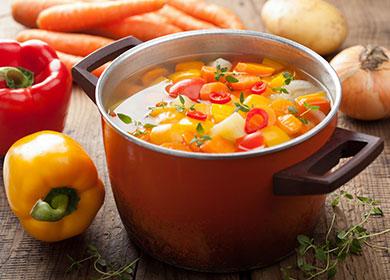The content of the article
Gallbladder removal is a serious interference with the digestive tract. But performed according to clear indications, it contributes to the normalization of functions impaired by the inflammatory process and compaction of stones. Proper nutrition provides its long-lasting effect. After all, removing the gallstone does not mean at all to protect yourself from the formation of stones in the future. Without a proper diet, they can form again, but already in the bile ducts.
Risks after surgery
The gall bladder is an auxiliary organ in the digestive system. Bile in it does not form, but only accumulates, and at the time of receipt of food it is thrown into the duodenum. If the function of bile formation is impaired, conditions arise for the formation of stones (calculi).
Their education is facilitated by:
- stagnation of bile due to an unhealthy diet with long breaks between meals;
- infectious diseases of the biliary tract that provoke inflammation;
- metabolic disorder due to an improper diet with high cholesterol.
As a rule, a complex of problems leads to the formation of calculi. And after the operation, some of them remain. Improper eating habits, a diet rich in animal fats, excess weight and related metabolic disorders contribute to the further formation of calculi directly in the liver ducts.
Consider the characteristic problems of the postoperative period.

Digestive upset
Bile is involved in digestion in a concentrated form. Developed by the liver, it accumulates in the gall bladder, where its composition becomes more saturated, enzymatically active. If there is no gall bladder and there is nowhere to accumulate, bile in small volumes constantly flows out of the liver and enters the duodenum.
At the same time, not only its composition, but also the quantity is changing. Therefore, the digestive tract cannot cope with “heavy” fatty foods, as well as with its large volume. After a plentiful meal or eating “prohibited” foods, digestive upsets occur. They are manifested by heaviness in the abdomen, pulling pains, nausea.
Re-formation of calculi
First encountered stones in the body? The main reason for the appearance of stones is a violation of the composition of bile, which entails its stagnation and further negative consequences. Some time after the operation, the cause of the disease does not disappear. Abundant and rare meals, the use of fatty foods, a sedentary lifestyle will support your liver in the formation of new stones. You can not overeat, especially eat fatty foods at night.

Flatulence and bloating
These problems often accompany people in the first months after surgery.Their growth is caused by an unfavorable intestinal microflora, which was previously inhibited by enzyme-rich bile. Weakened and non-concentrated, it is no longer as active against pathogenic microflora, causing rotting and fermentation processes in the intestine. By “helping” pathogenic bacteria with certain types of food, you are exacerbating the problem.
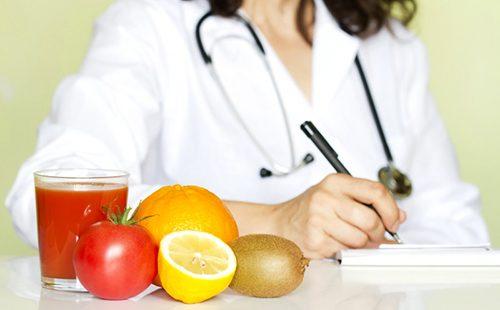
The principles of diet after removal of the gallbladder. What food is good after surgery
“Stone formation is caused by metabolic disorders. They need to be corrected with the help of the diet, ”says nutritionist Lyudmila Denisenko. “By choosing the right products, you can avoid the problems typical of the postoperative period and prevent the formation of new stones.”
The composition of the diet should be adjusted taking into account the needs of the body in the main components of nutrition.
- Fats. Stones are composed of cholesterol present in large quantities in animal fats. Its consumption should be minimized as much as possible by eliminating fatty, cholesterol-containing foods from the menu: liver, fatty meats and fish, and egg yolk. At the same time, valuable unsaturated fats in the diet should be preserved, as they contribute to the liquefaction of bile and prevent stone formation. We are talking about vegetable oils, such as sunflower, corn, flaxseed, olive.
- Carbohydrates. The most important component of the diet, but their choice should be approached carefully. The fact is that carbohydrates contained in baked goods and cereals stimulate the acidification of bile, which serves as an additional factor for the formation of stones. Easily digestible carbohydrates contained in sugar and dishes with it (marmalade, jam, pastille) do not have such an effect, but contain too many “empty calories” that stimulate weight gain and metabolic disturbance.
- Squirrels. Adequate intake of protein food in the body is necessary to normalize the liver, stimulate the renewal of its cells. Complete protein is found in egg white, cottage cheese, low-fat fish and meat.
- Vitamins. Particular attention in the diet after surgery to remove the gallbladder should be given to vitamins involved in the functions of the liver. To support its regeneration, it is necessary to use foods or vitamin complexes containing ascorbic acid, vitamins of groups B and K. Include complexes with retinol in the diet. Its deficiency promotes the crystallization of bile.
The daily diet should include the main groups of products in the following proportions:
- 25 percent protein - readily available, well-digestible dishes of meat, poultry, fish, dairy products;
- 25 percent fat - unsaturated vegetable oils, a small amount of animal fats from dairy products;
- 50 percent carbohydrates - The correct "slow" carbohydrates from cereals, vegetables and fruits, in a small amount from simple sugars.
“Gallstone disease is extremely rare in vegetarians,” says nutritionist Lyudmila Denisenko. - And also in people who often consume legumes, oranges and nuts. There is no consensus on why these particular products reduce the risk of stone formation. Perhaps the reason for this is fiber, and possibly vegetable proteins. "They are known to thin cholesterol and prevent the formation of dense fat clots."

Eating Rules
Also, proper nutrition after removal of the gallbladder should be based on the following principles.
- Drink alkaline mineral water. The magnesium salts contained in it alkalize bile and prevent its stagnation.
- Do not drink coffee and strong tea.. Caffeinated drinks stimulate biliary tract contraction. After using them, you will most likely experience discomfort from hepatic colic.
- Do not starve. It is proved that diets with a sharp limit on the amount of food consumed and low fat levels provoke stone formation. This is due to a decrease in the need for bile for digestion. It accumulates, stagnates in the gallbladder, and in its absence - in the ducts, condenses and crystallizes. The risk of calculi during starvation increases by forty percent.
- Do not take long breaks between meals. It is safe for a healthy person to rest the digestive system for eight hours, that is, during the night's sleep. If a person has dinner early and breakfasts late, the risk of stone formation increases. In the vast majority of cases, they are found in people who prefer to skip breakfast. After surgery, the rest period for the digestive system should be even shorter - no more than five to six hours. In this case, your body will be able to produce enough fatty acids that can dissolve cholesterol.
- Keep track of weight. Excess weight is a stimulating factor in stone formation. According to statistics, overweight people are six times more likely to suffer from this disease. Even an excess mass of ten kilograms doubles the risk of cholelithiasis or recurrence of calculi. Particularly susceptible to the disease and its re-manifestation are overweight women over the age of forty.
- Eat fats. It is believed that the menu for every day of the diet after removal of the gallbladder may include exclusively low-fat foods. This opinion is erroneous. The complete exclusion of fats, in contrast, stimulates the formation of new stones. Fat is needed in our digestive system to induce bile ducts to release bile. When there are no foods in the diet that require bile to break down, it stagnates and hardens. Use vegetable oil daily in at least three meals a day. Add at least two teaspoons to the dishes.
- Do not avoid alcohol. Alcohol use is another controversial factor in the diet. On the one hand, you need to take care of liver health, and on the other, alcohol reduces the risk of stone formation. According to studies, alcohol in small quantities reduces the risk of relapse by forty percent. “You need to be careful with alcohol, but you can take a little of it,” says nutritionist Lyudmila Denisenko. “Half a glass of red wine a day will only benefit.”
- Drink water. A sufficient amount of water in the body reduces the density of bile. Drink at least one and a half liters per day, gradually bringing this amount to the recommended volume - 30 milliliters per kilogram of your weight.
Daily diet
The diet after removal of the gallbladder is determined by the period that has elapsed since the operation.
In a week
How many can’t you eat after surgery? The operation under general anesthesia excludes the possibility of eating food in the first 12 hours. The menu for the week is determined by the attending physician, in accordance with general recommendations.
- First hours. It is forbidden to drink liquids and any food. To reduce thirst, you can only wipe your lips with a damp sponge or rinse your mouth.
- After 12 hours. The choice of food on the recommendation of a doctor. Small amounts of liquid food are allowed (jelly, soup).
- On the second day. Diet 0a is recommended, including liquid and jelly-like dishes: low-fat meat broths, mucous cereal broths, fruit jelly, jelly, rosehip broth.
- On the third or fifth day. Extension of the previous diet with mucous cereal soups on vegetable broth, liquid cereals from buckwheat, oat, rice croup, steam protein omelet, soft-boiled egg.
- On the sixth day. Transfer of the patient to diet 5a, which should be followed during the week. It includes low-fat varieties of meat, poultry and fish, stewed or steamed, low-fat dairy and lactic acid dishes, boiled and steamed vegetables, milk soups.Menu after removal of the gallbladder by laparoscopy. Do I need to follow a diet after surgery
When conducting laparoscopy, the diet after removal of the gallbladder by day will be less rigid. Less surgical intervention in the body, as a rule, eliminates a complex and lengthy rehabilitation period.
- First hours. The patient is allowed to take fluids; solid food is not allowed.
- After 12 hours. The choice of food on the recommendation of a doctor. Small amounts of liquid food are allowed (jelly, soup).
- On the second day. Fluid intake without restrictions, light food in small quantities is recommended. Eat lean boiled meat, fish, steam omelet, broths, cottage cheese, fruits.
- On the third day and later. It is allowed to switch to regular nutrition in accordance with diet 5. The patient is recommended to adhere to the “table 5” throughout life.
Recipes during this period are extremely simple. They include only two to three components. On the third day after the operation, vegetable souffles are allowed, which serve as a good prevention of constipation.
Cooking
- Grate medium-sized carrots or beets.
- Put in a saucepan, pour hot water and simmer until soft.
- Put in a baking dish, add a tablespoon of low-fat milk and whipped protein of one egg.
- Bake in a preheated oven for 20 minutes at a temperature of 180 degrees.
Steamed, boiled or stewed vegetables should form the basis of your diet in the future. Try to cook a variety of dishes from them, and you will see how rich your menu will be.
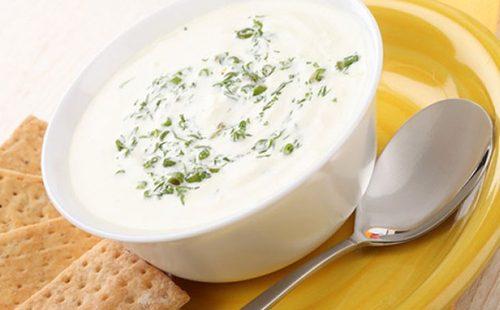
A week later
At this time, the body only reconfigures the digestive functions. Therefore, it is now especially important to avoid disruptions in the work of the digestive tract. As a rule, a person is already at home, so it is possible to cook a variety of dishes and carefully introduce new products into the diet.
- Boil, steam, stew foods. It is forbidden to fry in a pan, under the grill. Cook in a slow cooker, double boiler, oven.
- Eat the right consistency for you.. Grind or puree it unnecessarily is not necessary.
- Eat 6-7 times a day. So you help the body digest food more efficiently.
- Eat at the same time. Accustom the body to produce bile by a certain time. Due to the fact that she has nowhere to accumulate and “wait in the wings”, she should be able to use it immediately.
- Have dinner two hours before bedtime.. Early dinner and a long break in food during sleep contribute to the retention of bile in the ducts and the formation of stones.
- Keep track of food temperature. Dishes should be warm.
Fresh vegetables and fruits are prohibited during the first two weeks. The reason is their irritating effect on the digestive tract.
Therefore, include in the menu for the week the following dishes:
- milk soup;
- cottage cheese casserole with egg white;
- steamed soufflé;
- oven-baked chicken breast roll;
- yogurt and kefir with lactobacilli;
- liquid cereal porridge;
- protein omelet;
- low-fat cheese (curd).
These dishes are equally suitable for a child and an adult in the first month after surgery. Despite the seemingly limited menu, you can cook and eat quite a variety of dishes and products. For example, try making milk and vegetable soup.
Cooking
- Pour milk and water in the same proportion into the pan.
- Add the chopped vegetables after boiling: onions, carrots, potatoes.
- Pour washed polished rice.
- Boil until cooked.
- Salt.
Sweets are not prohibited during this period. Together with weak tea you can use natural jelly, marshmallows or marshmallows.
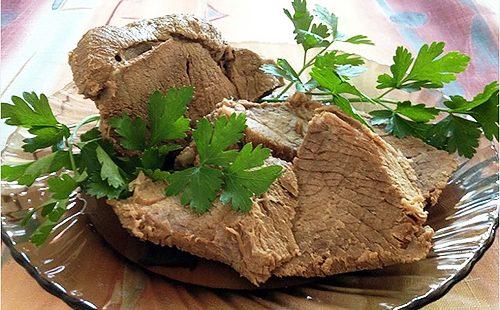
In a month
“The diet, after a month of gallbladder removal, is aimed at further restoring the body,” said Natalya Semennikova, nutritionist. “In the normal course of the process, you can gradually expand the list of dishes using only permitted products in it.”
In fact, the current diet will remain unchanged after 2 months, and after 6 months. Its basis is dietary table No. 5 (diet number 5), recommended for people with impaired liver and biliary system.
You should remember the list of prohibited foods and avoid them.
- Fatty Meat. Under the ban lamb, fat beef, pork, duck. The use of fat is not allowed.
- Rich meat broths. Allowed to use lean poultry broths.
- Fried foods. For digestion, they require a high concentration of bile, which your digestive tract can no longer produce.
- Ice cream and other cold dishes, including drinks. Cold can provoke a spasm of the biliary tract and the occurrence of pain.
- Spicy seasonings and dishes with them. They cause active secretion of bile and a violation of the digestive process.
- Confectionery with margarine, butter. Cakes, pastries with cream are prohibited.
- Carbonated drinks. The carbon dioxide contained in them irritates the digestive tract.
Of alcoholic beverages, dry wine is not recommended. Also avoid acidic foods, including fruits (kiwi, citrus fruits), marinades and dishes containing vinegar.
The following dishes are recommended for you:
- soups on vegetable or lean broth;
- boiled meat;
- steamed or stewed vegetable side dishes from zucchini, pumpkins, carrots, cabbage, beets;
- boiled potatoes in slices or in mashed potatoes with a small amount of low-fat milk;
- stewed low-fat fish;
- boiled seafood - squid fillet, mussels;
- cheese casserole;
- fruit desserts - marmalade, candy.
Boiled meat, especially cooked without spices, seems bland. But it is not necessary to use it only in this form. We offer you a recipe for veal baked in foil.
Cooking
- Rinse the veal fillet, place in a bowl.
- Pour in milk whey and leave overnight.
- Shake the meat, rub with salt, wrap in foil.
- Bake for 2 hours at 180 degrees.
Thanks to the steeping in the serum, the fillet will become soft and especially delicate. Eat it with a vegetable side dish.
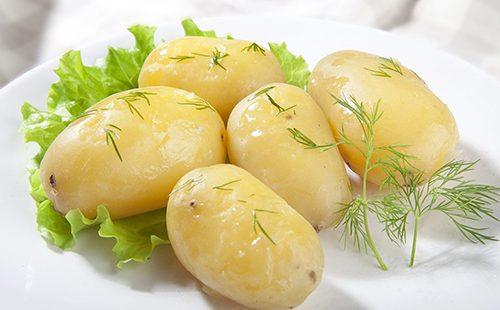
In three months
As a rule, after 3 months, the diet includes the entire set of permitted products. According to reviews, during this time food habits and preferences have developed, thanks to which the initial "restrictions" turn into a lifestyle and nutrition.
Your digestive tract is used to new working conditions. Of course, all prohibited products for you and remain so. But here you can quite afford fresh fruits and berries. Try a little strawberries, raspberries, peach, apricot, avoiding acidic foods and preferring sweet.In the summer, eat watermelons - they are especially valuable to you.
During this period and in the future, you can eat a fairly large number of dishes without fear.
Table - Dietary options 3 months after gallbladder removal
| Eating | Products, dishes |
|---|---|
| Breakfast | Boiled potatoes or mashed potatoes; cereal porridge (rice, oat, buckwheat, wheat, pearl barley); vegetable salad, vinaigrette; steam protein omelet; steamed meat or fish; sandwich with cheese |
| Lunch | Baked apple; unsweetened fruits; berries; nuts dried fruits (raisins, dried apricots, prunes) |
| Dinner | The vinaigrette; vegetable salad; vegetable soup, borsch; meat, fish soups, with meatballs; boiled, baked meat, fish; stewed vegetable side dishes of cabbage, zucchini, carrots, pumpkins, beets, potatoes |
| High tea | Yogurt; biokefir; yogurt; milk with biscuit cookies; fruit or berry jelly; unsweetened fruits |
| Dinner | Cottage cheese casserole; steam protein omelet; vegetable and cereal casserole |
| Before bedtime | Yogurt; yogurt; biokefir; fruit juice; unsweetened fruits |
The drinks:
- weak tea;
- milk;
- tea with milk;
- rosehip broth;
- fruit juice;
- dried fruits compote.
Pay special attention to fermented milk products in the diet. Biokefir, yogurt with a high content of lactobacilli will help in the normalization of intestinal microflora, disturbed in the absence of concentrated bile.
If flatulence, bloating persist, consult a doctor. A specialist will recommend you preparations containing bifidobacteria and prebiotics that will help maintain the proper intestinal microflora.
Diet after removing the gallbladder is the only way to maintain health and teach the body to live in new conditions for him. Understanding the value of proper nutrition will allow you to formulate a correct and healthy diet. It will include most of the products that you are used to seeing on your desk, but probably in a different processing. And meals in small portions, the correct drinking regime and the rejection of spicy, sour dishes will protect against discomfort and pain.
